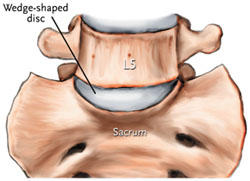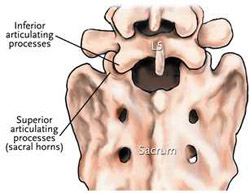Ankylosing Spondylitis (AS) is classified as a rheumatologic disorder of the lumbar spine. It is considered one of the so-called sero-negative arthropathies. It’s a type of arthritis that causes the joints in the lower back – the sacroiliac joints and the joints of the lumbar spine – to become inflamed. It will also frequently affect the hips and other peripheral joints. Ankylosing spondylitis comes from Latin words meaning, “bent spine.” The disease has been present since antiquity and has been found in the skeletal remains of Egyptian mummies. AS usually strikes a person between the teen years and the age of 30. “The classic picture of AS is a man between the ages of 15 and 40 with intermittent, dull low back pain and stiffness slowly progressing over a period of months.” Although AS was once considered to predominantly affect men, it is now known to affect women as well. Although women seem to have less progressive spinal disease, their peripheral joints tend to be more severely involved.*

Symptoms
The pathogenesis of AS is not known, but a genetic predisposition to the disorder does exist. Patients with AS often have stiffness in the morning that lasts a few minutes to several hours, sometimes coupled with fatigue. Prolonged inactivity can cause more pain and stiffness in the back, unlike other lower back disorders, which will often improve with rest. With AS, there may be pain and stiffness in the shoulders, hips or other joints as well. After a few years with the disorder, there may be pain in the middle or upper part of the back and gradual stiffening of the spine and eventually the neck. The classic deformity associated with AS is a rigid kyphosis, which causes a stiff, hunched forward posture.

Diagnosis
Ankylosing spondylitis is often diagnosed after your doctor takes a thorough history, performs a physical examination, and orders appropriate x-rays and laboratory studies. There is a significant association of AS with a commonly performed blood test that detects the presence or absence of a particular marker in the blood called the human leukocyte antigen B27 (HLA-B27). A positive test, along with other clinical correlations, will help to establish the diagnosis of AS.
* Seimon LP. Low Back Pain: Clinical Diagnosis & Management. Norwalk, CT: Appleton-Century-Crofts; 1983.
